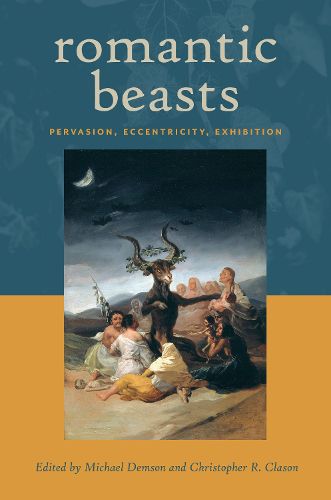Readings Newsletter
Become a Readings Member to make your shopping experience even easier.
Sign in or sign up for free!
You’re not far away from qualifying for FREE standard shipping within Australia
You’ve qualified for FREE standard shipping within Australia
The cart is loading…






By staging human-animal encounters, Romantic literature and art repeatedly questioned how "human" animals could be and how "animal" humans in fact are. Romantic-era authors and artists often depicted perplexing animal intrusions upon humans. Sometimes the intruders were mystifying or terrifying, like Coleridge's albatross or Poe's raven; sometimes they were mundane, as in "The Swallow" by Smith or "To a Mouse" by Burns-regardless, encounters with animal-others occasioned Romantic musings. This collection builds on existing scholarship while deploying new methodological approaches from gender studies, posthumanism, postcolonialism, disability studies, and digital studies to deepen our understanding of why animal-human encounters were so prevalent in the creative work and cultural discourse of the Romantic period, including the rhetoric of social movements like transatlantic abolitionism. Taken together, the chapters demonstrate the range and complexity of Romantic representations of human-animal interactions and conceptualizations of animality, nonhuman life, and not-wholly-human life.
Published by Bucknell University Press. Distributed worldwide by Rutgers University Press.
$9.00 standard shipping within Australia
FREE standard shipping within Australia for orders over $100.00
Express & International shipping calculated at checkout
By staging human-animal encounters, Romantic literature and art repeatedly questioned how "human" animals could be and how "animal" humans in fact are. Romantic-era authors and artists often depicted perplexing animal intrusions upon humans. Sometimes the intruders were mystifying or terrifying, like Coleridge's albatross or Poe's raven; sometimes they were mundane, as in "The Swallow" by Smith or "To a Mouse" by Burns-regardless, encounters with animal-others occasioned Romantic musings. This collection builds on existing scholarship while deploying new methodological approaches from gender studies, posthumanism, postcolonialism, disability studies, and digital studies to deepen our understanding of why animal-human encounters were so prevalent in the creative work and cultural discourse of the Romantic period, including the rhetoric of social movements like transatlantic abolitionism. Taken together, the chapters demonstrate the range and complexity of Romantic representations of human-animal interactions and conceptualizations of animality, nonhuman life, and not-wholly-human life.
Published by Bucknell University Press. Distributed worldwide by Rutgers University Press.